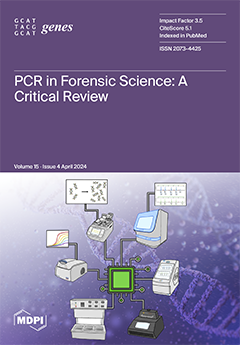Globally, SARS-CoV-2 has negatively impacted many lives and industries due to its rapid spread, severe outcomes, and the need for the implementation of lockdown strategies across the world. SARS-CoV-2 disease severity varies among different populations. Host genetics have been associated with various diseases, and their ability to alter disease susceptibility and severity. In addition, Human Leukocyte Antigen (
HLA) expression levels and alleles vary significantly among ethnic groups, which might impact the host’s response to SARS-CoV-2. Our previous study highlighted that
HLA-A might have an effect on COVID-19 disease severity across ethnicities. Therefore, in this study, we aim to examine the effect of
HLA-B and
C expression levels on COVID-19 disease severity. To achieve this, we used real-time PCR to measure the
HLA mRNA expression levels of SARS-CoV-2-infected individuals from a South African cohort and compared them across ethnic groups, disease outcomes, gender, comorbidities, and age. Our results show (1) that the effect of
HLA-B mRNA expression levels was associated with differences in disease severity when we compare symptomatic vs. asymptomatic (
p < 0.0001). While
HLA-C mRNA expression levels were not associated with COVID-19 disease severity. (2) In addition, we observed that
HLA-B and
HLA-C mRNA expression levels were significantly different between South African Black individuals and South African Indian individuals (
p < 0.0001,
p < 0.0001).
HLA-B mRNA expression levels among symptomatic South African Black individuals were significantly higher than symptomatic South African Indian individuals (
p < 0.0001). In addition, the
HLA-B mRNA expression levels of symptomatic South African Black individuals were significantly higher than asymptomatic South African Black individuals (
p > 0.0001).
HLA-C mRNA expression levels among symptomatic South African Black individuals were significantly higher than among symptomatic South African Indian individuals (
p = 0.0217). (3)
HLA-C expression levels were significantly different between males and females (
p = 0.0052). In addition, the
HLA-C expression levels of asymptomatic males are higher than asymptomatic females (
p = 0.0375). (4)
HLA-B expression levels were significantly different between individuals with and without comorbidities (
p = 0.0009). In addition, we observed a significant difference between individuals with no comorbidities and non-communicable diseases (
p = 0.0034), in particular, hypertension (
p = 0.0487). (5)
HLA-B expression levels were significantly different between individuals between 26–35 and 56–65 years (
p = 0.0380). Our work is expected to strengthen the understanding of the relationship between
HLA and COVID-19 by providing insights into
HLA-B and
C expression levels across ethnic populations in South Africa among COVID-19-symptomatic and asymptomatic individuals. Our results highlight that
HLA-B mRNA expression levels contribute to COVID-19 severity as well as variation in ethnicities associated with COVID-19. Further studies are needed to examine the effect of
HLA expression levels across various ethnic groups with contributing factors.
Full article






